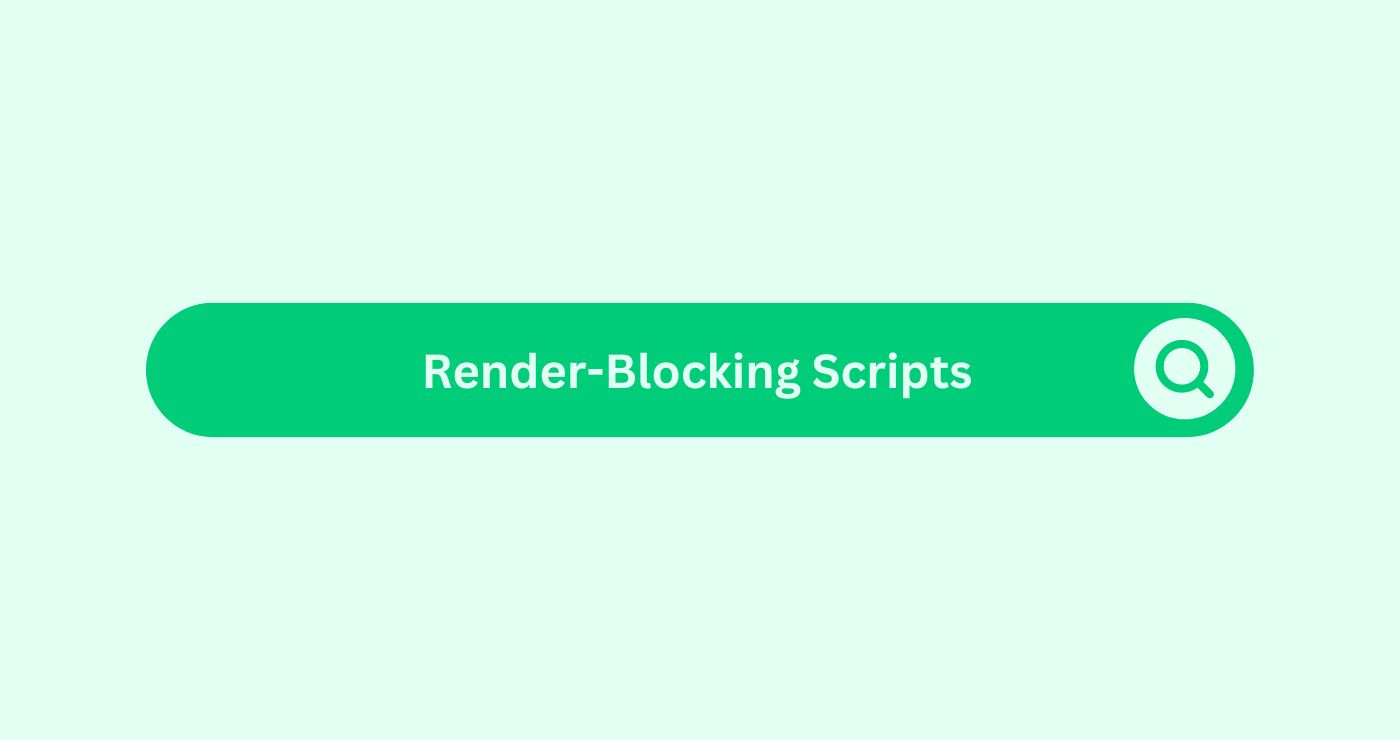Definition
Render-blocking scripts delay page renderingDefinition Rendering, in the context of SEO. refers to the p..., impacting SEO metricsWhat are Metrics in the context of SEO? Metrics in SEO refer... like FCP and LCP. Techniques like asynchronous loading and critical CSS inlining help improve page speedDefinition Page speed refers to the time it takes for a web ... and SEO performance.
How you can use
Example Implementation
To reduce the impact of render-blocking scripts, you can use several optimization techniques. One effective approach is to defer non-critical JavaScriptJavaScript is a versatile programming language that plays a ... until after the initial page load. Here’s an example of how to use the defer attribute in HTML:
htmlCopy code<!DOCTYPE html>
<html lang="en">
<head>
<meta charset="UTF-8">
<title>Example of Defer Attribute</title>
<link rel="stylesheet" href="styles.css">
</head>
<body>
<h1>Welcome to My Website</h1>
<p>This is an example page to demonstrate deferred scripts.</p>
<script src="script.js" defer></script>
</body>
</html>
In this example, the defer attribute tells the browserDefinition A browser is a software application used to acces... to continue parsing the HTML and building the DOM while the script is being downloaded. The script will be executed only after the entire document has been parsed, thus reducing its impact on the initial renderingDefinition Rendering, in the context of SEO. refers to the p... process.
Calculating Performance Metrics
To measure the performance improvements from optimizing render-blocking scripts, you can use tools like Google Lighthouse or WebPageTest. These tools provide detailed metricsWhat are Metrics in the context of SEO? Metrics in SEO refer... such as FCP, LCP, and Total Blocking Time (TBT), which help quantify the impact of your optimizations.
javascriptCopy code// Example pseudo-code for calculating the reduction in blocking time
const initialBlockingTime = 1500; // Initial total blocking time in milliseconds
const optimizedBlockingTime = 500; // Total blocking time after optimizations
const blockingTimeReduction = ((initialBlockingTime - optimizedBlockingTime) / initialBlockingTime) * 100;
console.log(`Blocking time reduced by ${blockingTimeReduction}% after optimizing render-blocking scripts.`);
Key Takeaways
- Impact on Performance: Render-blocking scripts can significantly delay page renderingDefinition Rendering, in the context of SEO. refers to the p..., affecting user experience and SEO.
- Core Web Vitals: Minimizing render-blocking resources is crucial for improving Core Web Vitals metricsWhat are Metrics in the context of SEO? Metrics in SEO refer... like FCP and LCP.
- Optimization Techniques: Use attributes like
asyncanddefer, inline critical CSS, and load non-critical scripts asynchronously. - Performance Tools: Tools like Google Lighthouse and WebPageTest can help measure and optimize the impact of render-blocking scripts.
- SEO Benefits: Reducing render-blocking scripts improves page speedDefinition Page speed refers to the time it takes for a web ..., which is a critical factor in search engine rankings.
FAQs
What are Render-Blocking Scripts?
Render-blocking scripts are JavaScriptJavaScript is a versatile programming language that plays a ... or CSS files that prevent a web page from renderingDefinition Rendering, in the context of SEO. refers to the p... until they are fully loaded and processed.
Why do Render-Blocking Scripts affect SEO?
They delay page renderingDefinition Rendering, in the context of SEO. refers to the p..., negatively impacting performance metricsWhat are Metrics in the context of SEO? Metrics in SEO refer... like FCP and LCP, which are important for SEO.
How can I identify Render-Blocking Scripts on my site?
Tools like Google Lighthouse and WebPageTest can identify render-blocking resources and suggest optimizations.
What is the defer attribute in HTML?
The defer attribute allows the browserDefinition A browser is a software application used to acces... to continue parsing HTML while the script is downloaded, executing the script only after the document has been parsed.
How does the async attribute differ from defer?
The asyncDefinition Async in SEO optimises website performance by loa... attribute downloads the script without blocking HTML parsing but executes it immediately once downloaded, potentially before the document is fully parsed.
What are some common sources of Render-Blocking Scripts?
External JavaScriptJavaScript is a versatile programming language that plays a ... files, CSS files, and inline scripts can all be sources of render-blocking resources.
How can I optimize CSS to reduce render-blocking?
Inline critical CSS and load non-critical CSS asynchronously using techniques like splitting CSS files or using the media attribute.
Can I eliminate all Render-Blocking Scripts?
While it may not be possible to eliminate all render-blocking scripts, you can significantly reduce their impact with optimization techniques.
How do Render-Blocking Scripts affect user experience?
They delay the renderingDefinition Rendering, in the context of SEO. refers to the p... of page content, leading to slower load times and potentially higher bounce rates.
What performance metrics should I monitor for Render-Blocking Scripts?
Monitor metricsWhat are Metrics in the context of SEO? Metrics in SEO refer... like First Contentful Paint (FCP), Largest Contentful Paint (LCP), and Total Blocking Time (TBT) to assess the impact of render-blocking scripts.




